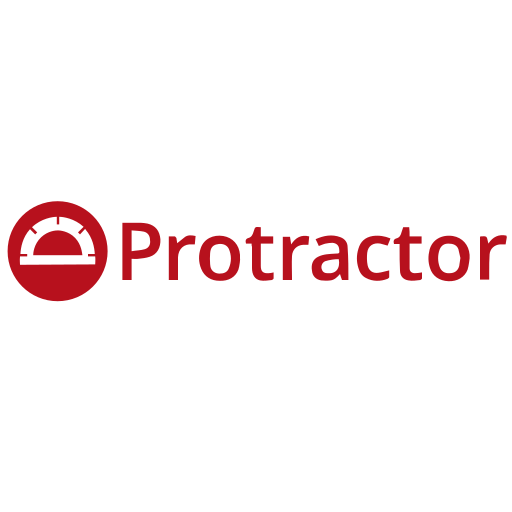Protractor is a popular open-source end-to-end testing framework specifically designed for automating web applications. Developed by the AngularJS team at Google, it has gained widespread adoption in the web development community due to its capabilities and ease of use. Protractor is built on top of WebDriverJS, which is a JavaScript implementation of the WebDriver API, making it particularly well-suited for testing Angular and non-Angular applications alike.
What is Protractor Used for and How Does it Work?
Protractor is primarily used for automating the testing of web applications. It allows developers and quality assurance teams to simulate user interactions with a web application, such as clicking buttons, filling out forms, and navigating between pages, in an automated and repeatable manner. This makes it an invaluable tool for ensuring the functionality and reliability of web applications.
Protractor works by interacting with the browser in a way that simulates real user behavior. It uses WebDriver to control the browser and execute test scripts written in JavaScript. Protractor scripts are written in a behavior-driven development (BDD) style, making them more human-readable and accessible to non-technical stakeholders.
Why Do You Need a Proxy for Protractor?
Proxy servers play a crucial role in enhancing the capabilities and effectiveness of Protractor for several reasons:
-
IP Rotation: When conducting extensive testing or web scraping, it’s essential to avoid detection and potential IP blocking by target websites. Proxy servers allow you to rotate your IP address, making it difficult for websites to track your testing activities.
-
Geo-Targeting: Some web applications display content based on the user’s geographic location. With proxy servers located in different regions or countries, you can test how your application behaves for users from various locations.
-
Load Testing: Protractor can be used for load testing, where multiple virtual users interact with a web application simultaneously. Proxies enable you to distribute these virtual users across different IP addresses, simulating real-world traffic more accurately.
-
Scalability: If you need to scale your testing infrastructure, proxies can help distribute the load across multiple servers, ensuring efficient testing without overloading any single server.
Advantages of Using a Proxy with Protractor
Using proxy servers in conjunction with Protractor offers several advantages:
-
Anonymity: Proxies mask your real IP address, providing anonymity when conducting tests or web scraping. This protects your identity and prevents websites from blocking your IP.
-
IP Rotation: Proxies allow you to rotate IP addresses, reducing the risk of IP bans and enabling continuous testing without interruptions.
-
Geographic Testing: With proxies in various locations, you can test how your application performs for users from different parts of the world, ensuring a consistent user experience.
-
Improved Performance: Proxies can cache resources, reducing the load on your testing infrastructure and speeding up test execution.
-
Enhanced Security: Proxies can act as a buffer between your testing environment and the target website, adding an extra layer of security.
What Are the Сons of Using Free Proxies for Protractor?
While free proxies may seem tempting, they come with significant limitations and drawbacks for Protractor testing:
| Cons of Free Proxies | Explanation |
|---|---|
| Limited Reliability | Free proxies are often unreliable and may have frequent downtime. |
| Slow Speed | Free proxies tend to be slow, which can impact test performance. |
| Limited Locations | Free proxies offer limited geographic coverage. |
| Security Risks | They may pose security risks, as they are often not well-maintained or secure. |
What Are the Best Proxies for Protractor?
Choosing the right proxies for Protractor is crucial for successful testing. Here are some considerations when selecting proxy servers:
-
Paid Proxies: Invest in premium, paid proxy services that offer reliability, speed, and a wide range of locations.
-
Rotating IPs: Look for proxy providers that offer rotating IPs to avoid IP bans and maintain anonymity.
-
Geographic Coverage: Choose proxies from providers with servers in the locations relevant to your testing needs.
-
Customer Support: Opt for providers with responsive customer support to address any issues promptly.
-
Performance Testing: For load testing, select proxies that can handle high traffic volumes without performance degradation.
How to Configure a Proxy Server for Protractor?
Configuring a proxy server for Protractor involves a few straightforward steps:
-
Choose a Proxy Provider: Select a reputable proxy provider that meets your testing requirements.
-
Acquire Proxy Credentials: Obtain the necessary credentials (e.g., IP addresses, ports, authentication details) from your proxy provider.
-
Configure Protractor: In your Protractor configuration file, specify the proxy server details using the
proxyoption. For example:javascriptexports.config = { // ... capabilities: { browserName: 'chrome', proxy: { proxyType: 'manual', httpProxy: 'http://your-proxy-ip:your-proxy-port', sslProxy: 'http://your-proxy-ip:your-proxy-port' } }, // ... }; -
Start Testing: With the proxy configuration in place, you can now run your Protractor tests, and they will be executed through the configured proxy server.
In conclusion, Protractor is a powerful tool for automating web application testing, and using proxy servers with Protractor can enhance its capabilities significantly. Proxies provide anonymity, IP rotation, and geographic diversity, all of which are essential for comprehensive testing. However, it’s crucial to choose reliable, paid proxies and configure them correctly to ensure seamless testing experiences.













